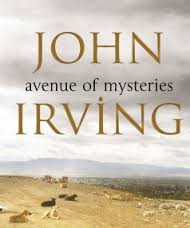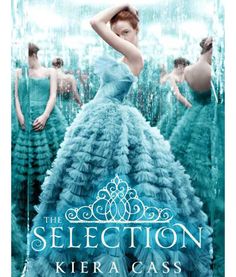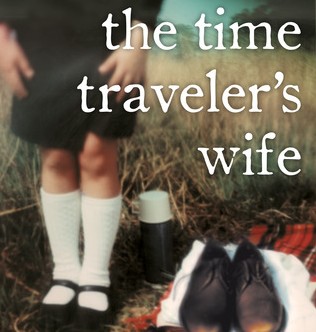First Pages of Best-Selling Novels: Avenue of Mysteries
I chose one of John Irving’s novels—Avenue of Mysteries—to examine in this week’s look at first pages. I read a lot of his books decades ago. When The World according to Garp came out, I was fascinated by his wild and imaginative way of telling a story. That style has served Irving well, as he’s had numerous best sellers, some of which have been made into films (The Cider House Rules, The Hotel New Hampshire, to name a couple).
Irving’s story topics are wide and wild. It’s challenging, to say the least, to find success as an author by writing books that break so many structural and genre rules. Many of his books are hard to define and slot into a specific genre, and this novel is no exception.
Avenue of Mysteries (2015) is categorized as contemporary fiction, which is what most (maybe all?) of his novels are labeled. But he does throw in a lot of elements of other genres into his novels. Kind of a genre stew of many flavors.
Readers of Irving’s work know to expect the unexpected and off-track meanderings. I found him intriguing to listen to at the Book Expo I attended a few years back. He spoke about how he always starts a novel with the last line in the book, the ending, and works backwards to the beginning (I’m guessing he means in outlining or general plotting. I doubt he actually writes the sentences backwards . . .).
The Dallas Morning News says it best: “The novel is a remarkable feat . . . as Irving ignores the constraints of conventional fiction and tosses all of his ideas into his novelist’s blender and turns it on high.”
Just his style. Which is what his readers expect.
The novel is a story about Juan Diego—a fourteen-year-old boy, who grew up in Mexico and who has a thirteen-year-old sister named Lupe. Lupe is a mind reader; she doesn’t know what everyone is thinking, but she knows what most people are thinking. Lupe is usually right about the past; without your telling her, she knows all the worst things that have happened to you.
As an older man, Juan Diego takes a trip to the Philippines, but what travels with him are his dreams and memories; he is most alive in his childhood and early adolescence in Mexico. As we grow older—most of all, in what we remember and what we dream—we live in the past. Sometimes, we live more vividly in the past than in the present.
Avenue of Mysteries is the story of what happens to Juan Diego in the Philippines, where what happened to him in the past—in Mexico—collides with his future.
Breaking the Rules Has Its Costs
As I’ve often said: established authors can break rules. Back in the ’70s, we saw creatives like Tom Robbins and Kurt Vonnegut and Richard Bach not only push the envelope of expected story structure but rip it to shreds.
While we still see a lot of this resistance to traditional novel structure by contemporary authors (as noted in our look at many of these first pages), it’s a hard road to success, especially if you’re an unknown author.
That’s not to say you should write boring, commercial, formulaic novels to hedge your chances for success. What’s important is story. How it’s told. How well readers can follow your story and get engaged.
Regardless of how much an author stretches the (very pliable) envelope of story structure, there are still some basics that apply:
- Readers want to follow the story, so clarity and cohesion are important.
- Readers want to root for the protagonist, so portraying an engaging and empathetic character right away is crucial.
- Readers want to be immersed and transported into the world of the story, so writers need to carefully build and convey scenes in a way that facilitates this experience.
So, let’s get into Irving’s first page, and see how well he grabs his reader’s interest. We’re using my first-page checklist in these weekly looks at best sellers’ first pages.
1.
Lost Children
Occasionally, Juan Diego would make a point of saying, “I’m a Mexican—I was born in Mexico, I grew up there.” More recently, he was in the habit of saying, “I’m an American—I’ve lived in the United States for forty years.” Or, in an effort to defuse the nationality issue, Juan Diego liked to say, “I’m a Midwesterner—in fact, I’m an Iowan.”
He never said he was a Mexican American. It wasn’t only that Juan Diego disliked the label, though he thought of it as such and he did dislike it. What Juan Diego believed was that people were always seeking a commonality with the Mexican-American experience, and he could find no common ground in his own experience; more truthfully, he didn’t look for it.
What Juan Diego said was that he’d had two lives—two separate and distinctly different lives. The Mexican experience was his first life, his childhood and early adolescence. After he left Mexico—he’d never gone back—he had a second life, the American or Midwestern experience. (Or was he also saying that, relatively speaking, not a whole lot had happened to him in his second life?)
What Juan Diego always maintained was that, in his mind—in his memories, certainly, but also in his dreams—he lived and relived his two lives on “parallel tracks.”
A dear friend of Juan Diego’s—she was also his doctor—teased him about the so-called parallel tracks. She told him he was either a kid from Mexico or a grown-up from Iowa all the time. Juan Diego could be an argumentative person, but he agreed with her about that.
Before the beta-blockers had disturbed his dreams, Juan Diego told his doctor friend that he used to wake up to the “gentlest” of his recurrent nightmares. The nightmare he had in mind was really a memory of the formative morning he became a cripple. In truth, only the beginning of the nightmare or the memory was gentle, and the origin of this episode was something that happened in Oaxaca, Mexico—in the neighborhood of the city dump, in 1970—when Juan Diego was fourteen.
Here’s my take on this opening, as I use my first-page checklist:
Opening Hook: No hook. Just an explanation of how Juan Diego defines himself.
Introduction of main character in first few lines: It’s not clear if Juan Diego is the main character or if the narrator is. The narrator voice implies someone’s opinion, but that’s not clear.
Starting the story in the middle of something that’s happened (or happening): Well, there is some discussion or line of thought going on here, but nothing actively happening in real time.
A nod to setting; avoid excessive exposition or narrative: No setting established. The first page, while using dialogue, is all narrative explanation.
A catalyst, inciting incident, or complication introduced for your character: None.
A hint at character’s immediate intentions: Not clear if there is a character. We have a narrator telling us about Juan Diego, but we don’t see anyone “on stage.”
A hint at character’s hidden need, desire, goal, dream, fear: We learn Juan Diego disliked being labeled a Mexican American. But we don’t actually see him and are only told some things about him.
Unique voice/writing style: Pretty dull, straightforward writing.
Setting the tone for the book: Unclear, but possibly.
A glimpse at character’s personal history, personality—shed light on motivation: Possibly his feelings about having grown up in Mexico have shaped his personality and motivation for the book, but none of that is brought out on the first page. We do learn a bit about his history as far as where he lived and how he identified himself with his locale.
Hint of character’s initial plot goal: No.
A course of action/decision implied. Introduction of high stakes/dramatic tension: None.
Good pacing; jump right into present action. No.
- One characteristic to reveal that makes your character heroic and vulnerable: Juan Diego is discussed, but nothing is mentioned to imply he’s in any way heroic or vulnerable. And being told that wouldn’t have helped. Readers want to see evidence of such qualities, not be told someone has them.
- One element of mystery, something hinted at that raises curiosity: Well, I wouldn’t say anything on that first page raised my curiosity.
- One element out of the ordinary, unusual, that makes the book different/stand out: No.
- Concise, catchy dialogue (if in the first scene) that is not boring or predictable: The lines of dialogue given are mundane and uninteresting.
- A hint at theme: None.
What Could Have Been Better
This is the first time I’ve ditched the subheading “Why This Works.” I think you can guess why. While I wanted to find something on this first page that interested me, I couldn’t.
We’ve seen how huge best sellers novels like The Goldfinch, Revival, All the Light We Cannot See, and Rogue Lawyer seemed to have excessive narration in the opening pages. Why these authors “get away” with writing boring openings can only be chalked up to one reason, to me: they are famous, have a readership, and readers are willing to wade through “boring” to get to “interesting.”
Personally, I don’t have that kind of patience. I have some favorite authors, but there are maybe only two I’d be willing to endure this kind of tedious exposition to get to a riveting story.
Seriously. Are you as puzzled as I am? Granted, this Irving book has a lot of negative reviews, meriting only 3.3 stars on Amazon. But people are still going to buy and read this book because, well, it was written by John Irving. I don’t think anyone would get past the first chapter (I can’t even say scene since it’s not really a scene, by definition) if it had my author name on the cover.
The first chapter of this novel continues much the same. While it evolves into some more intriguing storytelling of Juan Diego’s childhood, bringing in characters and dialogue, it’s still being told in narrative “telling” instead of showing.
There just isn’t any attempt to “show, don’t tell” in these opening pages. And more readers find that off-putting. How can you get into a story if some narrator is going to tell you about the characters and story instead of immerse you in that world?
Will his readers love this? I used to be one of his readers, but I wouldn’t read further. While this statement in the product description on Amazon is true—“John Irving returns to the themes that established him as one of our most admired and beloved authors in this absorbing novel of fate and memory” —Irving is making it hard to keep those faithful readers.
Is there anything at all that works on page 1? Not to me. I found the repetition of Juan Diego’s name a bit irritating. With no clue where this story is taking place, no sensory detail, no appearance of any characters, no action, nothing happening in the “now” of the story, I can’t get drawn in. If I overheard someone saying all this to another person at the next table over in Starbuck’s, I wouldn’t bother to eavesdrop.
We want our stories to be so intriguing that heads start leaning in to listen to what we are saying. We don’t want them dropping in a stupor and emitting snores.
Your thoughts? Did you find anything on this first page intriguing to you, making you want to read more? I promise to give you an example of a successful first page next week!
 Want to read all the analyses of best-seller first pages on Live Write Thrive?
Want to read all the analyses of best-seller first pages on Live Write Thrive?
Get the compiled collection of posts, along with additional insights and instruction that will help your first pages rock!
First Pages of Best Sellers: What Works, What Doesn’t, and Why is available in Kindle ebook and paperback! Get yours HERE!












“If I overheard someone saying all this to another person at the next table over in Starbuck’s, I wouldn’t bother to eavesdrop.”
If that isn’t the base standard for interesting writing, I don’t know what is. Well said.
How about the last paragraph? The story gets going with the beta blockers and the nightmares, and the becoming a cripple.
He should have started there!
Yes, those can generate curiosity, but it would be so much more engaging to show a scene in which the character is alive, doing something important that would nicely set up the premise of the story. Even in a prologue, to set the stage and show how intriguing a character this man was.
You’re right of course! It’s much easier to pick out the “best” part of a sample like this than to really go outside the box and think about what should have been there instead. Going back to your first page checklist for some refreshing! 😀
I totally agree. Most of the first page analysis I agree with. The narrative had me wondering, why am I reading this? However, if Irving was in my critique group, I’d tell him to start with the last paragraph.
I love your first page series and always read them eagerly. I agree with all of your comments but did find one point of interest …
The nightmare he had in mind was really a memory of the formative morning he became a cripple.
Since that is only a negative with no hint of where he went after that, it is too mild for real interest. If he had opened with it, it would have had more power and more of a clue about what might come later. joyce
I am unpleasantly surprised. It seems apparent that the publishers are not editing as they used to, or they dismiss it with the A-Listers. I wouldn’t read this book. There is nothing that catches my interest. There are many authors that seem to have given up quality, yet charge extremely high prices for their work.
Really it is informative article for novel sellers . This website has lots of information. Thanks for sharing.